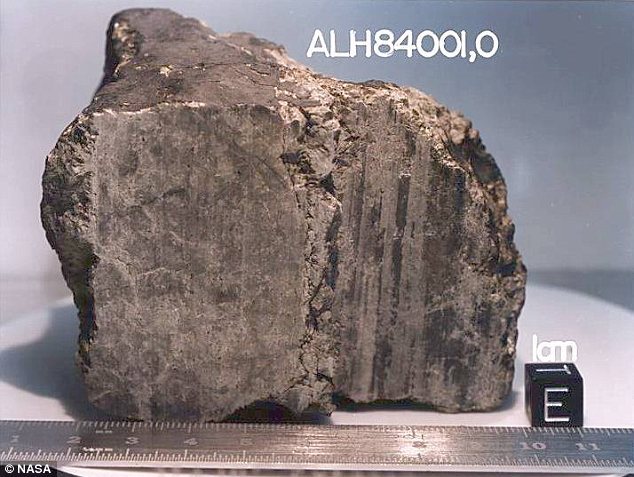In 1984, a meteorite codenamed Allen Hills (ALH) 84001 was found somewhere in Antarctica. The meteorite is thought to have fallen to earth 13,000 years ago. After more than 20 years, NASA announced that they have managed to find foreign bacteria on the surface and structure of the rocks, evidence of life on Mars.
Scientists believe that an asteorid or comet has hit the surface of Mars millions of years ago and caused rocks on the surface of Mars to spill into space. The rocks floated in space for 16 million years before one finally fell in Antarctica 13,000 years ago.

In 1996, NASA and the United States government issued a surprising statement that it looks like the meteorite contains bacteria from Mars.
The released photos show the existence of objects that resemble living things.
But that year, interest in the discovery soon vanished because other scientists have accused the meteorite of being contaminated. They also argue that the heat generated when the rock is splattered into space may have created a mineralized structure misinterpreted as a microfossil.
Although the debate continues, research continues on NASA, this time using a high-resolution electron microscope, a technology not yet available in 1996. And with this technology, the 1996 discovery was confirmed again.
Research on the meteorite was led by Dr. Kathie Thomas-Keprta and other scientists at Johnson Space Center in Houston, Texas. The study focused on detailed analysis of magnetic crystals, micro magnetic particles and carbonate disks in the stone. Some specific bacteria on earth are known to contain magnetic crystals that are believed to function like micro compasses to help them know the direction. These crystals will then turn into unusual shapes when joined with bacteria, and this is the form seen in ALH 84001.
In addition, the researchers say that the purity of the chemicals found in the stone is more biological than geological. Moreover, the Stone shows the possibility of interaction with water.
Dr Dennis Bazylinski of the University of Nevada who reviewed the discovery report published in the journal Geochemical and Meteoritic Society said:
"I think this report is incredible. I have been in the field of magnetic bacteria for a long time and I believe that one indication that there is life on Mars is the presence of magnetic crystals in meteorites that seem to be extracted from bacteria. At first, I thought there was a mistake. But now I have no doubt. "
Dr Bazylinski also said that one of the Earth's organisms he was examining had a particle shape very similar to that of the Martian meteorite.
This discovery is still to be debated. But if confirmed, then this discovery will probably be the greatest science discovery in this century.